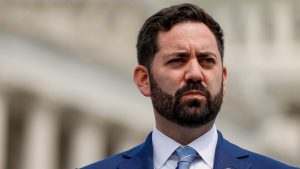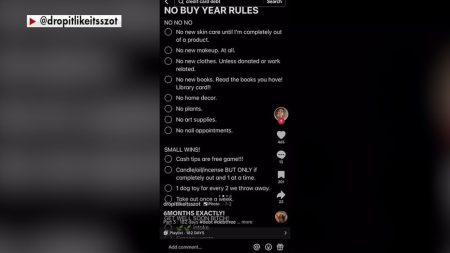The Department of Education has issued guidance to student loan companies about collecting federal student loan payments after a three-year pause, according to documents obtained by Politico through a federal records request.
The documents, which were filed in November, indicated that the Education Department expected the first monthly payments to resume in October and interest to begin accruing in September, Politico reported.
“Servicers shall extend the temporary 0% interest rate, initially implemented with CR 5475, through 08/31/2023. All other requirements of CR 5475 remain in place,” the documents read.
In addition, student loan servicers are required to alert borrowers of payment resumption after Aug. 31.
Servicers will continue to issue refunds for payments received on or after March 13, 2020, “if the borrower requests the payment be refunded or if directed to do so by FSA [Federal Student Aid department],” the documents stated.
As part of the CARES Act, which was enacted into law in March 2020 in response to the COVID-19 pandemic, federal student loan payments have been paused and interest rates reduced to 0%. The payment pause was approved under former President Donald Trump and President Joe Biden has extended it multiple times.
But the White House announced last November that federal student loan payments would resume 60 days after the Education Department is allowed to initiate its student loan forgiveness plan or after Supreme Court litigation is resolved – whichever comes first.
If you’re a private student loan borrower, you won’t receive any federal student loan relief. But you can lower your monthly payments by refinancing your private student loans at a lower interest rate. Visit Credible to compare options from multiple lenders at once, without affecting your credit score.
SUPREME COURT ALLOWS $6 BILLION IN PAYMENTS TO CONTINUE IN STUDENT LOAN RELIEF CASE
Student loan forgiveness plan remains under Supreme Court review
In February, the Supreme Court heard arguments in two lawsuits against President Biden’s student loan forgiveness plan. The proposal could wipe out up to $10,000 in federal student loan debt and up to $20,000 for those who received Pell Grants. In total, the plan could eliminate up to $441 billion in student loan debt for more than 40 million borrowers, according to the Federal Reserve Bank of New York.
Federal student loan debt stands at $1.635 trillion and is carried by more than 43.8 million borrowers, according to EducationData.org. Should SCOTUS give Biden the green light for relief, those eligible would need to have individual incomes of less than $125,000 or $250,000 if they’re married couples.
But the president’s forgiveness program has faced a series of legal challenges since it was announced in August last year.
One lawsuit involves the states of Nebraska, Missouri, Arkansas, Iowa, Kansas and South Carolina. They claimed the proposal would unlawfully harm their tax revenues. These states also said the president was unjustly using the Higher Education Relief Opportunities for Students (HEROES) Act of 2003 to initiate widespread debt cancellation.
Biden, who has announced he is running for re-election, claims the Department’s proposal is in line with the law.
But in another case, two individuals had argued that the process for creating Biden’s relief plan was unlawful.
The Supreme Court is expected to issue rulings on the lawsuits in late June or early July.
Should President Biden’s student loan forgiveness plan become law, private student loan borrowers would not benefit. However, you can reduce your monthly payments by refinancing your private student loans to a lower interest rate. Visit Credible to speak to a student loan professional and get your questions answered.
SECURE 2.0 ACT: STUDENT LOAN PAYMENTS WILL COUNT TOWARD 401(K) MATCHING CONTRIBUTIONS
Supreme Court declines to block $6B student loan settlement
Even though federal student loan borrowers may begin repayment later this year, thousands of borrowers could still get some debt relief.
That’s because the Supreme Court declined to pause $6 billion in payments related to a settlement stemming from the Sweet v. Cardona lawsuit. This 2019 class-action lawsuit claimed the Department of Education had unreasonably delayed pending borrower defense claims.
The federal government may forgive student loan debt taken on by borrowers who attended educational institutions that engaged in misconduct that violated certain state laws, according to StudentAid.gov.
By 2022, the government had reached a settlement with borrowers. But earlier this year, Lincoln Educational Services Corp., American National University and Everglades Colleges Inc – which were named in the suit – petitioned SCOTUS for a stay on the payments.
The highest court denied that move and payments were allowed to resume. The suit involved more than 200,000 students who attended a school on the “Exhibit C” list published by the Project on Predatory Student Lending (PPSL), which represented borrowers in the suit.
Class-action members are expected have their outstanding student loans fully discharged and are expected to receive refunds for amounts paid toward eligible loans, the PPSL said. Relief should come on or before January 28, 2024, the PPSL reported.
If you’re not involved in the lawsuit, you likely won’t get relief related to the settlement. But you can still reduce your private student loan payments by consolidating these loans for a lower interest rate. Visit Credible to get your personalized rate in minutes.
BIDEN ADMINISTRATION UNVEILS DEFENSE OF STUDENT LOAN FORGIVENESS PLAN AT SUPREME COURT
Have a finance-related question, but don’t know who to ask? Email The Credible Money Expert at [email protected] and your question might be answered by Credible in our Money Expert column.
Read the full article here











